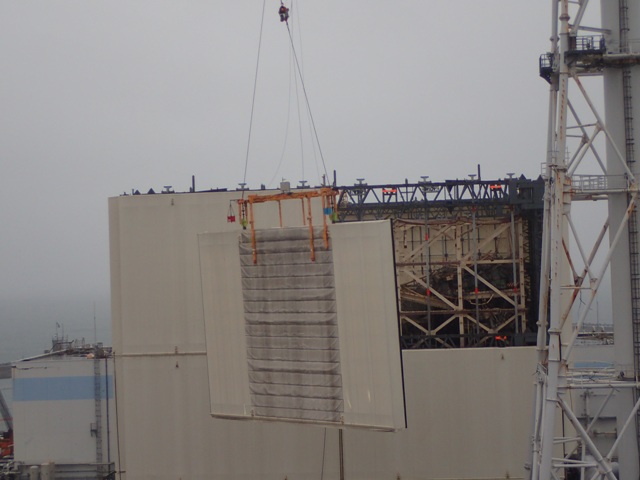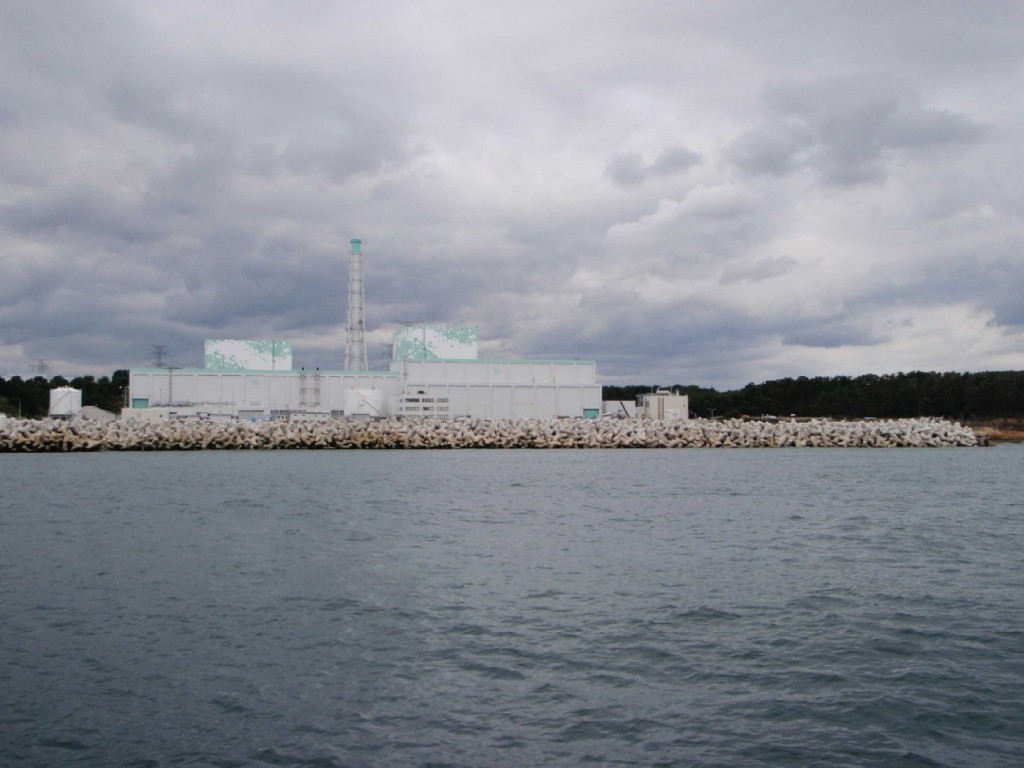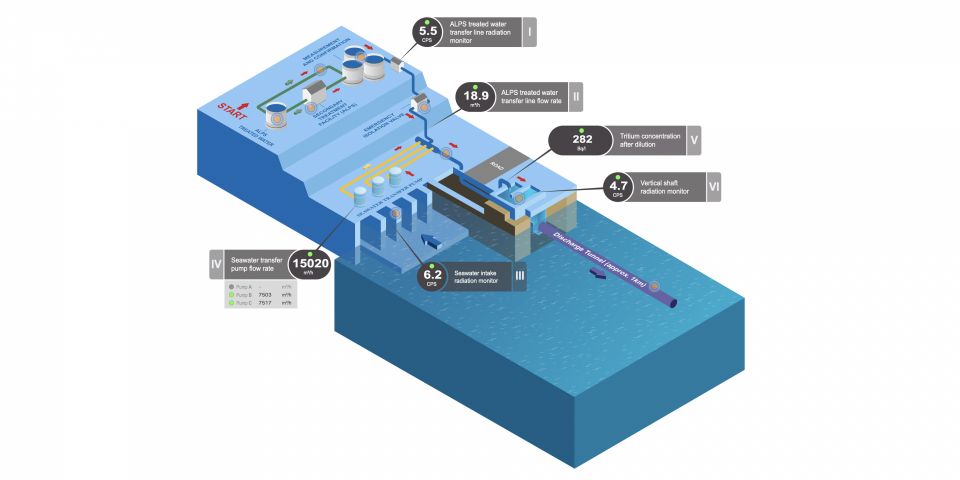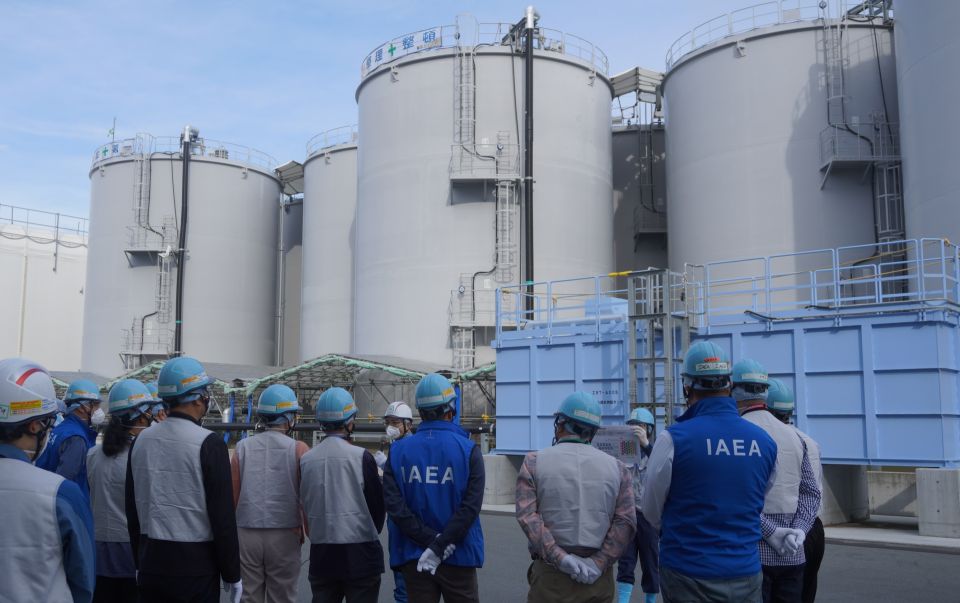TEPCO Updates on Fukushima Daiichi Conditions (with video)
Special ANS Friday Matinee edition by Will Davis
It's been quite some time since this blog has taken a look at present events at the Fukushima Daiichi nuclear power station in Japan; while recent events have not been dramatic, the status of the slow, steady progress toward eventually remediating the site merits attention.
Some of the very significant measures taken originally to stabilize the site are now being removed. For example, the whole reactor building at Unit 1 (one of two reactor buildings containing actual cores which was damaged by hydrogen gas explosion) was enclosed in a new exterior structure to prevent any further emission of radionuclides to the environment. Now, TEPCO is removing this structure piece by piece in preparation for the operations to remove the used nuclear fuel from the pool in which it's stored. The structure to be removed is quite large, but was intelligently designed in a modular way such that it can be removed as easily as it was installed.

Removal of exterior structure at Fukushima Daiichi Unit 1, courtesy Tokyo Electric Power Company Holdings, Inc.
While this work is underway, the interior of the structure (which used to be the refueling floor of the unit but which is now open to the air after destruction of the upper portion of the building) has been sprayed heavily with an anti-scattering agent which will solidify and contain any radioactive material so that it can neither become airborne nor be washed away by rain or snow.
In a similar but exponentially larger operation, the almost complete paving of the entire site continues. It was determined by TEPCO that it was necessary to prevent ground water from entering the buildings on the site, which only adds to the amount of water that decontamination systems need to handle. The well publicized "ice wall" of frozen earth which is being employed experimentally at this time is one part of this puzzle; paving over the site, to prevent water from rain or snow soaking into the earth and then making its way downgrade to the nuclear units is another.
TEPCO has just recently released a remarkable roughly nine minute long video which shows not only the work described above, but many other site improvements and changes. The video not only shows current progress but compares that progress to conditions right after the tsunami and after the nuclear accident had occurred.
•Click here to watch the TEPCO video "Current Conditions at Fukushima Daiichi."
Earlier this year, TEPCO in conjunction with several other entities conducted a muon imaging exercise on Unit 2, which operates a little bit like an x-ray except that it employs muon particles in place of the actual x-ray emissions used for medical purposes. The idea was to further attempt to determine, as had been done prior with Unit 1, the condition of the melted fuel in Unit 2 and to find out whether it had remained in the reactor pressure vessel or had exited it to fall into the containment vessel which surrounds the reactor pressure vessel. The results, published here, seem to indicate that the fuel in Unit 2 has remained entirely or at least mostly in the vessel. This finding is consistent with TEPCO's previous theory, developed with extensive use of computer modeling, that the cores at Units 1 and 3 are probably mostly removed from the reactor vessels while that at Unit 2 was probably mostly retained in the vessel.
Although the exact physical conditions of the reactor cores in the three units which were operating at the time of the earthquake and tsunami cannot be ascertained exactly because they cannot yet be seen, other conditions such as radioactive emissions and potential recriticality are, by necessity, constantly being monitored for any changes. Although recriticality is wholly unlikely and highly improbable, nevertheless it must be considered in TEPCO's operation to ensure complete safety. TEPCO produced a video showing the present fuel condition, and maintenance of core debris conditions which for those unfamiliar is worth watching.
•TEPCO video on preventing recriticality, maintaining fuel debris conditions (~5 minutes)
As we can see from all of the above information, TEPCO is moving steadily toward that roughly 30 to 40 year time frame at which it is hoped the site will be cleaned up and released. Conditions on the site have vastly improved not just physically over the last couple of years, but have specifically improved exponentially for those who work there. The release of radionuclides to the ocean has been halted, the inrush of water to the units has been drastically slowed, and some of the early rapid response type measures and structures are now giving way to the plans for the medium term recovery as set out in TEPCO's road map for recovery. While there are many years to go, the Fukushima Daiichi site of today is nothing like the post-accident site and the progress made is quite remarkable.
Links:
Fukushima Daiichi five years after the accident (March 2016) (Atomic Power Review)
Fukushima Daiichi three years after the accident (March 2014) (ANS Nuclear Cafe)
Fukushima Daiichi two years after the accident (March 2013) (ANS Nuclear Cafe)
 Will Davis is Communications Director and board member for the N/S Savannah Association, Inc. He is a consultant to the Global America Business Institute, a contributing author for Fuel Cycle Week, and he writes his own popular blog Atomic Power Review. Davis is also a consultant and writer for the American Nuclear Society, and serves on the ANS Communications Committee and on the Book Publishing Committee. He is a former US Navy reactor operator and served on SSBN-641, USS Simon Bolivar.
Will Davis is Communications Director and board member for the N/S Savannah Association, Inc. He is a consultant to the Global America Business Institute, a contributing author for Fuel Cycle Week, and he writes his own popular blog Atomic Power Review. Davis is also a consultant and writer for the American Nuclear Society, and serves on the ANS Communications Committee and on the Book Publishing Committee. He is a former US Navy reactor operator and served on SSBN-641, USS Simon Bolivar.






